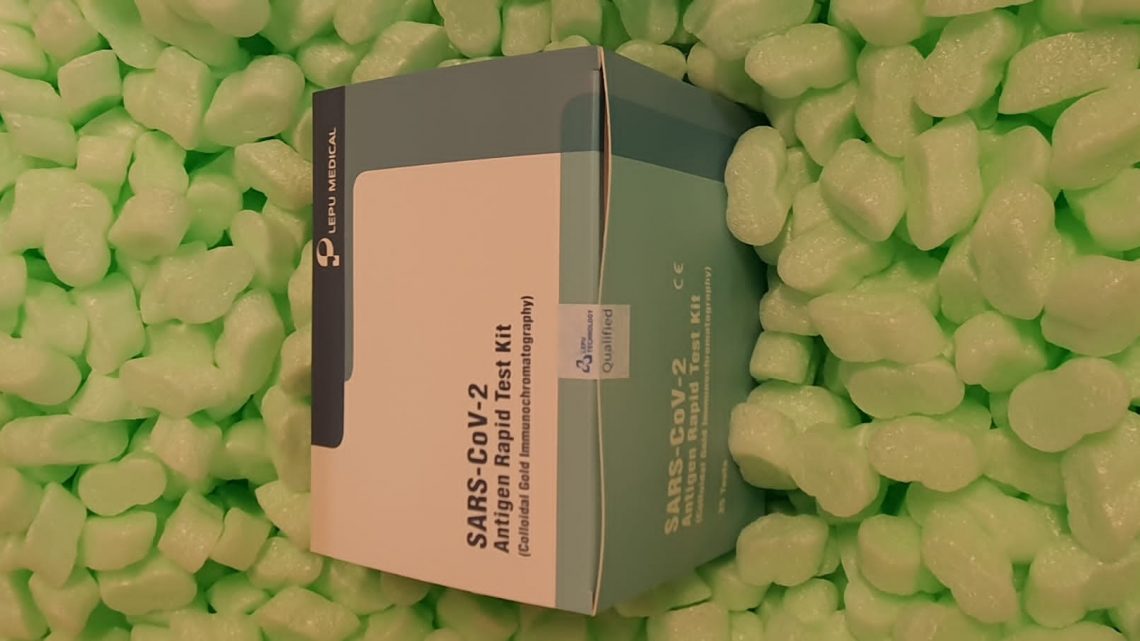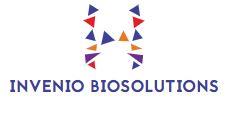Triple-negative breast cancer (TNBC) is a main subtype of breast cancer. Due to the dearth of efficient therapeutic targets, the prognosis is poor. In order to seek out an efficient goal, regardless of many efforts, the molecular mechanisms of TNBC are nonetheless not nicely understood which stay to be a profound scientific problem. To establish the candidate genes in the carcinogenesis and development of TNBC, microarray datasets GSE36693 and GSE65216 had been downloaded from the Gene Expression Omnibus (GEO) database. The differentially expressed genes (DEGs) had been identified, and purposeful and pathway enrichment analyses had been carried out utilizing the Gene Ontology (GO) and Kyoto Encyclopedia of Genes and Genomes (KEGG) databases by way of DAVID.
We constructed the protein-protein interplay community (PPI) and carried out the module analysis utilizing STRING and Cytoscape. Then, we reanalyzed the chosen DEG genes, and the survival analysis was carried out utilizing cBioportal. A complete of 140 DEGs had been identified, consisting of 69 upregulated genes and 71 downregulated genes. Three hub genes had been upregulated among the many chosen genes from PPI, and organic course of analysis uncovered the truth that these genes had been primarily enriched in p53 pathway and the pathways in cancer. Survival analysis confirmed that solely CCNE1 could also be concerned in the carcinogenesis, invasion, or recurrence of TNBC.
The expression ranges of CCNE1 had been considerably greater in TNBC cells than non-TNBC cells that had been detected by qRT-PCR (P < 0.05). CCNE1 may confer a poorer prognosis in TNBC identified by bioinformatic analysis and performs key roles in the development of TNBC which can contribute potential targets for the prognosis, therapy, and prognosis evaluation of TNBC. This research goals to establish pathway involvement in the event of cisplatin (cis-diamminedichloroplatinum (II); CDDP) resistance in A549 lung cancer (LC) cells by using superior bioinformatics software program. We developed CDDP-resistant A549 (A549/DDP) cells via extended incubation with the drug and carried out RNA-seq on RNA extracts to find out differential mRNA and miRNA expression between A549/DDP and A549 cells.
We analyzed the gene dysregulation with Ingenuity Pathway Analysis (IPA; QIAGEN) software program. In distinction to prior analysis, which relied on the clustering of dysregulated genes to pathways as a sign of pathway exercise, we utilized the IPA software program for the dynamic analysis of pathway exercise relying on the gene dysregulation ranges. We predicted 15 pathways considerably contributing to the chemoresistance, with a number of of them to haven’t been beforehand reported or analyzed in element.
GPRC5A: An rising prognostic biomarker for predicting malignancy of Pancreatic Cancer based mostly on bioinformatics analysis
Pancreatic cancer (PaCa) is a extremely deadly malignancy. The therapy choices for PaCa lack efficacy. The research aimed to discover the molecular biomarkers for predicting survival of PaCa and establish the potential carcinogenic mechanisms of the chosen gene. Based on public databases of PaCa, differentially expressed genes (DEGs) had been identified utilizing Networkanalyst. Survival analyses had been exerted on GEPIA. Oncomine and The Human Protein Atlas had been used for verifying the expression on mRNA and protein ranges. Enrichment analyses had been generated on Metascape and gene set enrichment analysis (GSEA).
Univariate analyses had been carried out to find out the scientific components related to the expression of GPRC5A. GPRC5A was identified as essentially the most useful gene in predicting survival of PaCa sufferers. Patients with excessive expression of GPRC5A confirmed bigger tumor measurement, greater TNM levels, greater tumor grade, and extra constructive resection margin. In mutant KRAS, TP53, CDKN2A and SMAD4 group, the expression of GPRC5A was greater than non-mutant group.
Mechanistically, GPRC5A might promote metastasis of PaCa primarily by way of regulating epithelial-mesenchymal transition (EMT) and neuroactive ligand-receptor interplay. GPRC5A might act as an oncogene in the development of PaCa and could possibly be a prognostic biomarker in predicting survival of PaCa. Among them, the PKR signaling, ldl cholesterol biosynthesis, and TEC signaling pathways are included, in addition to genes, reminiscent of PIK3R3, miR-34c-5p, and MDM2, amongst others. We additionally present a preliminary analysis of SNPs and indels, current solely in A549/DDP cells. This research’s outcomes present novel potential mechanisms and molecular targets that may be explored in future research and help in enhancing the understanding of the chemoresistance phenotype.
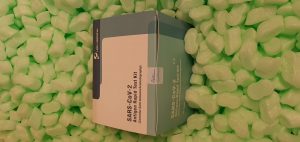
Bioinformatic analysis for the identification of potential gene interactions and therapeutic targets in atrial fibrillation
Atrial fibrillation (AF) is the most typical kind of tachycardia. The main harm induced by AF is a systemic embolism. Although AF therapies have advanced considerably, the success charge of sinus rhythm upkeep is comparatively low. The purpose is the unfinished understanding of the AF mechanisms. A Gene Expression Omnibus (GEO) dataset (GSE79768) was downloaded. Differentially expressed genes (DEGs) had been identified by bioinformatic analysis. Enriched phrases and pathways had been identified by gene ontology (GO) and Kyoto Encyclopedia of Genes and Genomes (KEGG) analyses.
A protein-protein interplay (PPI) community was constructed to find out regulatory genes. CytoHubba and the Molecular Complex Detection (MCODE) algorithm had been used to establish potential hub genes and necessary modules. The Predicting Associated Transcription Factors From Annotated Affinities (PASTAA) technique was used to foretell transcription components (TFs). Two hundred thirty-five upregulated DEGs and seventy-seven downregulated DEGs had been identified. In the GO organic course of, mobile element, and molecular operate analyses, constructive regulation of cell migration, anchoring junctions, and cell adhesion molecule binding had been enriched considerably. The Hippo signalling pathway was essentially the most considerably enriched pathway.
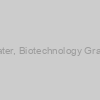 Water, Biotechnology Grade |
|
42300008-1 |
Glycomatrix |
1 gal |
EUR 33.07 |
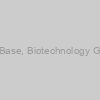 Tris-Base, Biotechnology Grade |
|
42020309-1 |
Glycomatrix |
500 g |
EUR 34.22 |
 Tris-Base, Biotechnology Grade |
|
42020309-2 |
Glycomatrix |
1 kg |
EUR 63.17 |
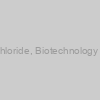 5M Sodium Chloride, Biotechnology Grade, 500ml |
|
PB0570-500ml |
Vivantis |
each |
Ask for price |
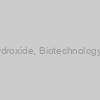 1M Sodium Hydroxide, Biotechnology Grade, 500ml |
|
PB0750-500ml |
Vivantis |
each |
Ask for price |
 3M Sodium Acetate, pH5.2, Biotechnology Grade, 500ml |
|
PB0461-500ml |
Vivantis |
each |
Ask for price |
 Solution, Biotechnology Grade, 500ml) 10% Sodium Dodecyl Sulfate (SDS) Solution, Biotechnology Grade, 500ml |
|
PB0640-500ml |
Vivantis |
each |
Ask for price |
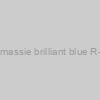 Coomassie brilliant blue R-250 |
|
CB0037 |
Bio Basic |
5g |
EUR 70.44 |
|
|
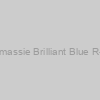 Coomassie Brilliant Blue R-250 |
|
CH024 |
ABM |
10 g |
EUR 145.2 |
 Coomassie Brilliant Blue R-250 |
|
CH025 |
ABM |
25 g |
EUR 85 |
|
Description: Commonly used stain for the detection of protein bands following electrophoresis. |
 Coomassie Brilliant Blue R-250 |
|
CH026 |
ABM |
50 g |
EUR 210 |
 Coomassie Brilliant Blue R-250 |
|
40340012-1 |
Glycomatrix |
10 g |
EUR 20.06 |
 Coomassie Brilliant Blue R-250 |
|
40340012-2 |
Glycomatrix |
25 g |
EUR 38.77 |
 Coomassie Brilliant Blue R-250 |
|
40340012-3 |
Glycomatrix |
50 g |
EUR 72.08 |
 Coomassie Brilliant Blue R-250 |
|
40340012-4 |
Glycomatrix |
100 g |
EUR 109.36 |
 Coomassie brilliant blue R-250 |
|
20-abx082400 |
Abbexa |
-
Ask for price
-
Ask for price
|
|
|
|
 Coomassie brilliant blue R-250 |
|
20-abx082561 |
Abbexa |
-
Ask for price
-
Ask for price
|
|
|
|
 Coomassie Brilliant Blue R-250 |
|
MB153-100G |
EWC Diagnostics |
1 unit |
EUR 116.32 |
|
Description: Coomassie Brilliant Blue R-250 |
 Coomassie Brilliant Blue R-250 |
|
MB153-25G |
EWC Diagnostics |
1 unit |
EUR 29.71 |
|
Description: Coomassie Brilliant Blue R-250 |
 Coomassie Brilliant Blue R-250 |
|
MB153-5G |
EWC Diagnostics |
1 unit |
EUR 18.85 |
|
Description: Coomassie Brilliant Blue R-250 |
 Coomassie brilliant blue R-250 |
|
abx082400-100l |
Abbexa |
100 µl |
EUR 125 |
 Coomassie brilliant blue R-250 |
|
abx082400-1ml |
Abbexa |
1 ml |
Ask for price |
 Coomassie brilliant blue R-250 |
|
abx082400-200l |
Abbexa |
200 µl |
EUR 162.5 |
 Coomassie brilliant blue R-250 |
|
abx082561-1ml |
Abbexa |
1 ml |
EUR 125 |
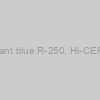 Brilliant blue R-250, Hi-CERT™ |
|
RM344-10G |
EWC Diagnostics |
1 unit |
EUR 15.86 |
|
Description: Brilliant blue R-250, Hi-CERT™ |
 Brilliant blue R-250, Hi-CERT™ |
|
RM344-25G |
EWC Diagnostics |
1 unit |
EUR 34.95 |
|
Description: Brilliant blue R-250, Hi-CERT™ |
 Brilliant Blue G |
|
C5579-100000 |
ApexBio |
100 g |
EUR 66 |
|
|
|
Description: used for protein staining in SDS-PAGE, Blue Native PAGE, and the Bradford Method; selective inhibitor of the P2X purinoceptor channel P2X7 |
 Brilliant blue G |
|
GRM1219-25G |
EWC Diagnostics |
1 unit |
EUR 61.93 |
|
Description: Brilliant blue G |
 Brilliant blue G |
|
GRM1219-5G |
EWC Diagnostics |
1 unit |
EUR 13.76 |
|
Description: Brilliant blue G |
 Brilliant Blue FCF |
|
T7771-10mg |
TargetMol Chemicals |
10mg |
Ask for price |
|
|
|
Description: Brilliant Blue FCF |
 Brilliant Blue FCF |
|
T7771-1g |
TargetMol Chemicals |
1g |
Ask for price |
|
|
|
Description: Brilliant Blue FCF |
 Brilliant Blue FCF |
|
T7771-1mg |
TargetMol Chemicals |
1mg |
Ask for price |
|
|
|
Description: Brilliant Blue FCF |
 Brilliant Blue FCF |
|
T7771-50mg |
TargetMol Chemicals |
50mg |
Ask for price |
|
|
|
Description: Brilliant Blue FCF |
 Brilliant Blue FCF |
|
T7771-5mg |
TargetMol Chemicals |
5mg |
Ask for price |
|
|
|
Description: Brilliant Blue FCF |
 Brilliant Blue R250 |
|
T19838-10mg |
TargetMol Chemicals |
10mg |
Ask for price |
|
|
|
Description: Brilliant Blue R250 |
 Brilliant Blue R250 |
|
T19838-1g |
TargetMol Chemicals |
1g |
Ask for price |
|
|
|
Description: Brilliant Blue R250 |
 Brilliant Blue R250 |
|
T19838-1mg |
TargetMol Chemicals |
1mg |
Ask for price |
|
|
|
Description: Brilliant Blue R250 |
 Brilliant Blue R250 |
|
T19838-50mg |
TargetMol Chemicals |
50mg |
Ask for price |
|
|
|
Description: Brilliant Blue R250 |
 Brilliant Blue R250 |
|
T19838-5mg |
TargetMol Chemicals |
5mg |
Ask for price |
|
|
|
Description: Brilliant Blue R250 |
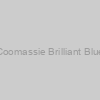 Coomassie Brilliant Blue |
|
18-446 |
Genesee Scientific |
1 L/Unit |
EUR 95.06 |
|
Description: G-250 Protein Stain |
 Coomassie Brilliant Blue |
|
18-447 |
Genesee Scientific |
3.78 Liters (1 gal.)/Unit |
EUR 271.75 |
|
Description: G-250 Protein Stain |
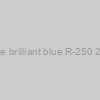 Coomassie brilliant blue R-250 2 xSolution |
|
C462151 |
Bio Basic |
250ml |
EUR 127.86 |
|
|
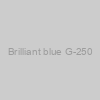 Brilliant blue G-250 |
|
T20731-10mg |
TargetMol Chemicals |
10mg |
Ask for price |
|
|
|
Description: Brilliant blue G-250 |
 Brilliant blue G-250 |
|
T20731-1g |
TargetMol Chemicals |
1g |
Ask for price |
|
|
|
Description: Brilliant blue G-250 |
 Brilliant blue G-250 |
|
T20731-1mg |
TargetMol Chemicals |
1mg |
Ask for price |
|
|
|
Description: Brilliant blue G-250 |
 Brilliant blue G-250 |
|
T20731-50mg |
TargetMol Chemicals |
50mg |
Ask for price |
|
|
|
Description: Brilliant blue G-250 |
 Brilliant blue G-250 |
|
T20731-5mg |
TargetMol Chemicals |
5mg |
Ask for price |
|
|
|
Description: Brilliant blue G-250 |
 Coomassie Brilliant Blue 0.125% |
|
40120761-1 |
Glycomatrix |
1 L |
EUR 77.66 |
 Coomassie Brilliant Blue R-250 C.I. No. 42660_x000D__x000D_ |
|
C25266 |
Pfaltz & Bauer |
25G |
EUR 106.05 |
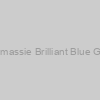 Coomassie Brilliant Blue G250 |
|
abx090654-5g |
Abbexa |
5 g |
EUR 226.8 |
|
|
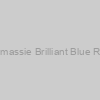 Coomassie Brilliant Blue R250 |
|
abx090655-5g |
Abbexa |
5 g |
EUR 226.8 |
|
|
 Coomassie Brilliant Blue G250 |
|
abx090654-100l |
Abbexa |
100 µl |
EUR 125 |
 Coomassie Brilliant Blue G250 |
|
abx090654-1ml |
Abbexa |
1 ml |
Ask for price |
 Coomassie Brilliant Blue G250 |
|
abx090654-200l |
Abbexa |
200 µl |
Ask for price |
 Coomassie Brilliant Blue R250 |
|
abx090655-100l |
Abbexa |
100 µl |
EUR 125 |
 Coomassie Brilliant Blue R250 |
|
abx090655-1ml |
Abbexa |
1 ml |
Ask for price |
 Coomassie Brilliant Blue R250 |
|
abx090655-200l |
Abbexa |
200 µl |
Ask for price |
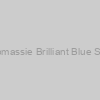 Coomassie Brilliant Blue Stain |
|
ML046-250ML |
EWC Diagnostics |
1 unit |
EUR 15.11 |
|
Description: Coomassie Brilliant Blue Stain |
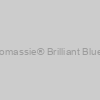 Coomassie® Brilliant Blue G |
|
MB092-25G |
EWC Diagnostics |
1 unit |
EUR 73.87 |
|
Description: Coomassie® Brilliant Blue G |
 Coomassie® Brilliant Blue G |
|
MB092-5G |
EWC Diagnostics |
1 unit |
EUR 15.91 |
|
Description: Coomassie® Brilliant Blue G |
 Coomassie brilliant blue G-250 |
|
CB0038 |
Bio Basic |
25g |
EUR 90.28 |
|
|
 Coomassie Brilliant Blue G-250 |
|
40340008-1 |
Glycomatrix |
10 g |
EUR 21.12 |
 Coomassie Brilliant Blue G-250 |
|
40340008-2 |
Glycomatrix |
25 g |
EUR 37.64 |
 Coomassie Brilliant Blue G-250 |
|
40340008-3 |
Glycomatrix |
50 g |
EUR 68.46 |
 Coomassie Brilliant Blue G-250 |
|
40340008-4 |
Glycomatrix |
100 g |
EUR 127.66 |
 Coomassie brilliant blue G-250 |
|
20-abx082402 |
Abbexa |
-
Ask for price
-
Ask for price
|
|
|
|
 Coomassie brilliant blue G-250 |
|
20-abx082562 |
Abbexa |
-
Ask for price
-
Ask for price
|
|
|
|
 Coomassie brilliant blue G-250 |
|
abx082402-100l |
Abbexa |
100 µl |
EUR 125 |
 Coomassie brilliant blue G-250 |
|
abx082402-1ml |
Abbexa |
1 ml |
Ask for price |
 Coomassie brilliant blue G-250 |
|
abx082402-200l |
Abbexa |
200 µl |
EUR 162.5 |
 Coomassie brilliant blue G-250 |
|
abx082562-100l |
Abbexa |
100 µl |
EUR 125 |
 Coomassie brilliant blue G-250 |
|
abx082562-1ml |
Abbexa |
1 ml |
Ask for price |
 Coomassie brilliant blue G-250 |
|
abx082562-200l |
Abbexa |
200 µl |
EUR 162.5 |
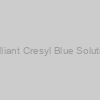 Brilliant Cresyl Blue Solution |
|
S066-100ML |
EWC Diagnostics |
1 unit |
EUR 20.69 |
|
Description: Brilliant Cresyl Blue Solution |
 Brilliant Cresyl Blue 0.5% Alcoholic |
|
RRSP13-B |
Atom Scientific |
100ml |
EUR 14.76 |
|
|
 Brilliant Cresyl Blue 0.5% Alcoholic |
|
RRSP13-C |
Atom Scientific |
250ml |
EUR 19.31 |
|
|
 Brilliant Cresyl Blue 0.5% Alcoholic |
|
RRSP13-D |
Atom Scientific |
500ml |
EUR 34.11 |
|
|
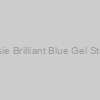 Coomassie Brilliant Blue Gel Staining Kit |
|
abx090653-1Kit |
Abbexa |
1 Kit |
EUR 226.8 |
|
|
 Coomassie Brilliant Blue Gel Staining Kit |
|
abx090653-100l |
Abbexa |
100 µl |
EUR 125 |
 Coomassie Brilliant Blue Gel Staining Kit |
|
abx090653-1ml |
Abbexa |
1 ml |
Ask for price |
 Coomassie Brilliant Blue Gel Staining Kit |
|
abx090653-200l |
Abbexa |
200 µl |
Ask for price |
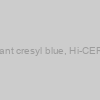 Brilliant cresyl blue, Hi-CERT™ |
|
RM271-25G |
EWC Diagnostics |
1 unit |
EUR 126.32 |
|
Description: Brilliant cresyl blue, Hi-CERT™ |
 Brilliant cresyl blue, Hi-CERT™ |
|
RM271-5G |
EWC Diagnostics |
1 unit |
EUR 28.11 |
|
Description: Brilliant cresyl blue, Hi-CERT™ |
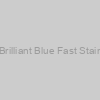 Coomassie Brilliant Blue Fast Staining Solution |
|
abx090652-200ml |
Abbexa |
200 ml |
EUR 243.6 |
|
|
 Coomassie Brilliant Blue Fast Staining Solution |
|
abx090652-100l |
Abbexa |
100 µl |
EUR 137.5 |
 Coomassie Brilliant Blue Fast Staining Solution |
|
abx090652-1ml |
Abbexa |
1 ml |
Ask for price |
 Coomassie Brilliant Blue Fast Staining Solution |
|
abx090652-200l |
Abbexa |
200 µl |
Ask for price |
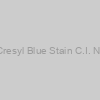 Brilliant Cresyl Blue Stain C.I. No. 51010 |
|
B17910 |
Pfaltz & Bauer |
1G |
EUR 318.54 |
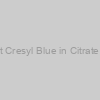 Brilliant Cresyl Blue in Citrate Saline |
|
RRSP14-B |
Atom Scientific |
100ml |
EUR 14.76 |
|
|
 Brilliant Cresyl Blue in Citrate Saline |
|
RRSP14-C |
Atom Scientific |
250ml |
EUR 19.31 |
|
|
 Brilliant Cresyl Blue in Citrate Saline |
|
RRSP14-D |
Atom Scientific |
500ml |
EUR 19.31 |
|
|
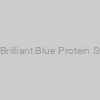 5X Coomassie Brilliant Blue Protein Staining Solution |
|
abx460032-1096tests |
Abbexa |
10 × 96 tests |
Ask for price |
 5X Coomassie Brilliant Blue Protein Staining Solution |
|
abx460032-596tests |
Abbexa |
5 × 96 tests |
Ask for price |
 5X Coomassie Brilliant Blue Protein Staining Solution |
|
abx460032-96tests |
Abbexa |
96 tests |
EUR 525 |
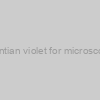 Gentian violet for microscopy |
|
GRM6354-100G |
EWC Diagnostics |
1 unit |
EUR 12.6 |
|
Description: Gentian violet for microscopy |
 Gentian violet for microscopy |
|
GRM6354-1KG |
EWC Diagnostics |
1 unit |
EUR 72.01 |
|
Description: Gentian violet for microscopy |
 Gentian violet for microscopy |
|
GRM6354-25G |
EWC Diagnostics |
1 unit |
EUR 6.93 |
|
Description: Gentian violet for microscopy |
) Lugols Iodine Solution (for Microscopy) |
|
RRSP84-D |
Atom Scientific |
500ml |
EUR 7.33 |
) Lugols Iodine Solution (for Microscopy) |
|
RRSP84-E |
Atom Scientific |
1L |
EUR 11.32 |
) Lugols Iodine Solution (for Microscopy) |
|
RRSP84-F |
Atom Scientific |
2.5L |
EUR 19.31 |
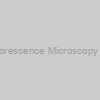 Fluorescence Microscopy Aid |
|
4400 |
Virostat |
3 ml |
EUR 216.6 |
|
Description: This is Counter - Stain/Blocking Diluent with optimal formula for preparaiton of final dilutions of FITC conjugate prior to use in FA procedures. |
 Brilliant Green |
|
21770007-1 |
Glycomatrix |
100 mL |
EUR 69.54 |
 Brilliant Green |
|
21770007-2 |
Glycomatrix |
500 mL |
EUR 107.06 |
In the PPI community analysis, we discovered that Class A/1 (rhodopsin-like receptors) could be the vital module. Ten hub genes had been extracted, together with 6 upregulated genes and four downregulated genes. CXCR2, TLR4, and CXCR4 might play vital roles in AF. In the TF prediction, we discovered that Irf-1 could also be implicated in AF. We discovered that the CXCR4, TLR4, CXCR2 genes, the Hippo signalling pathway and the category A/1 (rhodopsin-like receptors) module might play vital roles in AF incidence and upkeep, which can present novel targets for AF therapy.
